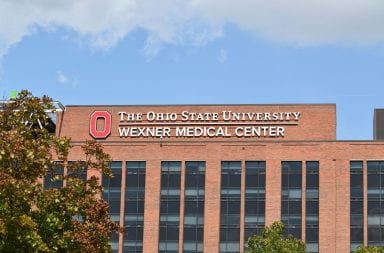Ohio’s medical malpractice problems are still far from being solved.
Rising malpractice insurance rates are interfering with Ohio physicians’ ability to provide medical services to patients, according to the Ohio State Medical Association.
However, Ohio physicians who have put many months of work into Senate Bill 281 have some reason to celebrate.
SB 281, which was introduced last summer and places limits on non-economic damage awards, was signed into law Jan. 10 by Gov. Bob Taft. It was heard and revised by the Ohio Senate and House of Representatives, and lastly by a conference committee, out of which came the final signed bill.
Non-economic damage awards will now be limited to $1 million for all parties involved, except for rare catastrophic injuries. A person with altering but non-catastrophic injuries will be limited to $350,000.
The bill was originally touted as a major answer to the much-needed stabilization of rising medical malpractice insurance rates. By placing limits on jury awards for non-economic damages, commonly known as pain and suffering, the law will allow insurance companies to be able to project their losses for malpractice awards and stop raising insurance rates.
State Sen. David Goodman, R-Bexley, who introduced the bill, said this is the one area of payouts which insurance companies cannot predict or control.
“We’re not saying that pain and suffering isn’t valueless,” he said. “We’re saying that it’s priceless — you can’t put a number on it. You have to have some sort of limitation.”
Goodman said such limitations will enable insurance companies to set aside payouts.
However, SB 281, which will go into law April 10, will do more good in the long term, Goodman said.
“It’s not going to happen overnight,” he said. “I don’t think that Senate Bill 281 is the answer. I think that we’ve handled a major piece of the problem, but it’s going to be a long time before you’ll see an effect.”
Opponents of the bill include state Sen. Eric Fingerhut, D-Shaker Heights, who disagrees that the jury awards are the source of the problem and points to the insurance industry as being at fault.
“The insurance industry has a monopoly in Ohio, and we need another fund to drive down competition,” he said.
He is working on legislation to reinstall the Joint Underwriting Authority, a previous alternative insurance carrier for Ohio physicians, which he said had stabilized insurance premiums under Gov. George Voinovich.
Bill Byers, associate director for governmental relations for the Ohio State Medical Association, counters the charge from opponents that the insurance companies are trying to make up for their stock losses by raising insurance rates.
“The testimony that we heard coming from the Department of Insurance showed us that, in fact, the investment practices of the companies for malpractice insurance were not primarily in stocks,” Byers said, speaking of insurance testimonies for bill, which were heard by OSMA.
He said not only were the portfolio returns of insurance companies consistent for the last 10 years, as showed in their testimonies, but only 11 percent of the investment portfolios were actually held in stocks.
Byers said the payout of insurance companies showed they were losing money for every malpractice payout.
“They showed us very clearly that the payouts were for settlements, the cost of spending in medical liability lawsuits and the cost of jury verdicts,” he said.
Goodman acknowledged that once the bill becomes law, it might encounter opposition from the Supreme Court in terms of constitutionality.
“We don’t know for sure (what will happen),” he said.
In the meantime, legislation is being introduced to further explore other resolutions to the issue, Goodman said.
“This is not about physician protection law,” he said. “This is about making sure that you and I, and the people that we know — everyone can get the best medical care available.
“We will always continue to look at this issue,” Goodman said.


